14 min read
Privacy Management with PowerShell – Let's look at the core features of Priva!
All you need to know about Privacy Management, privacy management policies, rules, and subject rights requests.

This blog article is intended for technical staff who deploy resources in Microsoft Azure. The starting point when deploying Azure resources is the Azure Portal. This is where the Azure Services are configured.
An important issue is that resources can be created in a standardised way in order to ideally always get the same end result.
But what to do?
We have known this feature in virtual environments for a long time. Existing virtual machines are used to generate templates from them.
Subsequently, these are rolled out as often as required, depending on demand and capacity.
With Azure, the process is somewhat different. If we create a resource, e.g. a virtual machine, in the last step, if we have filled in everything correctly. There is the option to export the configuration once - for this purpose we select the item "Download a template for automation":
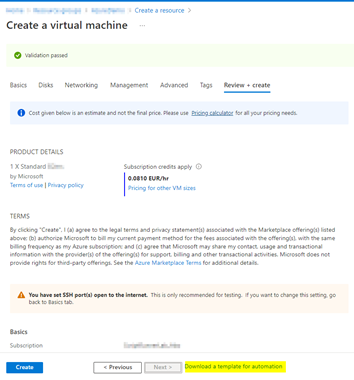
The JSON file is displayed on the next page. In the upper area I have the option of downloading the file, saving it in the library or deploying the template directly.
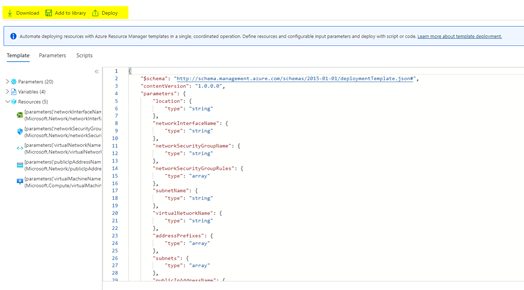
By choosing download, a ZIP file is created and downloaded; when "Add to Library" is selected, the template ends up in the Template Gallery.
This gallery can be found in the portal at the "Template Specs".

In this template spec, I can now select the referring template and deploy it. If I have downloaded the ZIP file, I can import it via the Marketplace:
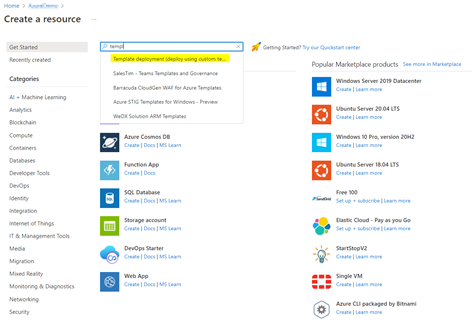
In the following dialogue, I can now add the content of the JSON file, or also add it from existing templates from the template spec.
In addition, there are preconfigured templates from Microsoft Azure that simplify the creation, too.
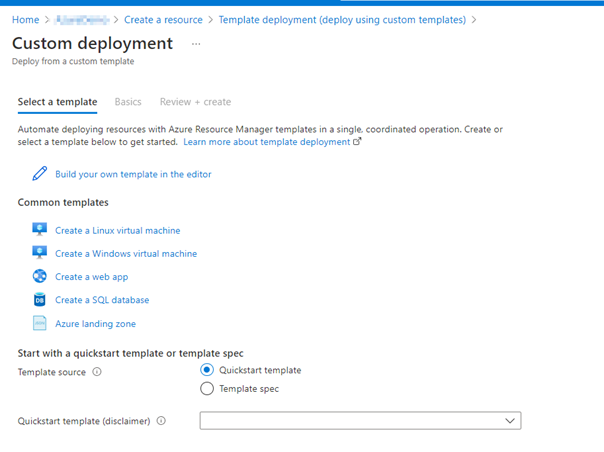
The templates provide the company with many possibilities to create resources in a standardised and secure way. The main advantage is that we are not only limited to virtual machines but can also automate apps, access points such as Azure Gateway & Loadbalancer or SQL databases.
ScriptRunner helps you create resources in Azure. Many scripts are available in our ActionPacks that make it easier to create and manage resources.
Before you start running Azure scripts, make sure that the ScriptRunner server has been set up correctly to perform actions in Azure. The appropriate Azure modules must be present on the server. Our Trial Guide describes how to perform the integration. ("Registering ScriptRunner with Azure AD")
After downloading our software free of charge, our documentation guides you, and if the trial guide cannot answer your question, our support will be happy to help. Have fun testing!
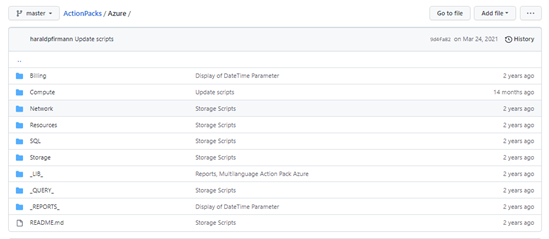
Click here for the ActionPacks!
Jul 16, 2024 by Damian Scoles
All you need to know about Privacy Management, privacy management policies, rules, and subject rights requests.
Jul 3, 2024 by Matthias Jütte
Every last Friday of July, we get to celebrate System Administrator Appreciation Day, a special day dedicated to...
Jul 2, 2024 by Philip Lorenz
Windows PowerShell 5.1 is usually preinstalled and the default – is it worth switching to PowerShell 7, or will it lead...
Michael Gall is Head of Customer Success at ScriptRunner. He is responsible for ScriptRunner's helpdesk and first contact person for all questions when using the software. He links projects, documentation, development, sales and marketing and ensures that ScriptRunner is used optimally by customers. With his strong infrastructure background, he implements a wide variety of requirements, whether cloud, hybrid or on-premises. He has been working in IT for 15 years, including project organization, consulting or as a data center manager.